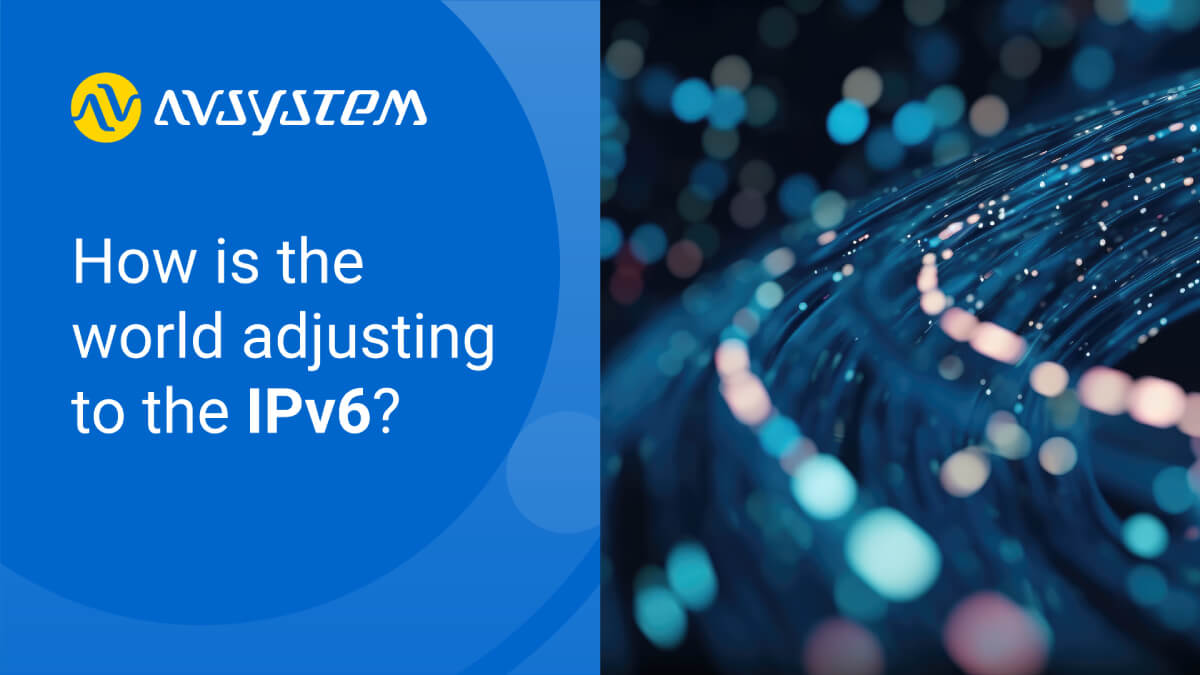IPv6 adoption and allocation policy, part 2

IP assignment policy
As previously mentioned, each IP address is associated with a specific geographical region (e.g. country). It does not however expose the location of a device itself, but rather a network to which it is connected. That naturally brings an idea for an IP address distribution system to be hierarchical and composed of dedicated parties responsible for resource allocation within a given geographical region. That’s certainly true. The central authority responsible for global coordination of IP address distribution is the Internet Assigned Numbers Authority (IANA), with the following five subordinate Regional Internet Registries (RIRs) around the world, each of which controls roughly continental regions:
- African Network Information Centre (AFRINIC) for Africa,
- American Registry for Internet Numbers (ARIN) for the United States, Canada, and many Caribbean and North Atlantic islands,
- Asia Pacific Network Information Centre (APNIC) for the Asia-Pacific region,
- Latin America and Caribbean Network Information Centre (LACNIC) for the Latin American and Caribbean regions,
- Réseaux IP Européens Network Coordination Centre (RIPE NCC) for Europe, the Middle East, and parts of Central Asia.
RIRs are responsible for the division of large address blocks assigned to them by IANA into smaller groups, further distributed to National and Local Internet Registries (NIR/LIR), which in turn assign particular addresses to Internet Service Providers and/or end users. IPs are distributed based on globally agreed-upon rules and policies, in particular regulating the size of address blocks allocated by the entities mentioned above.
Discover our carrier-grade IPv4/IPv6 DHCP Server with essential IPAM features.
Generally speaking, the policy governing the allocation of IP address space to RIRs is composed of the following key elements:
1. RIRs are being assigned IP address blocks of a fixed size (/8 in the case of IPv4 and /12 for IPv6) by IANA.
2. The projected number of IP addresses for a particular RIR is calculated based on the average number of IPs allocated monthly by this RIR during the last six months multiplied by the number of months which the prediction is made for.
3. An RIR is eligible to request a new block from IANA if it has less than half of a block left in stock or it lacks sufficient space to meet its members’ needs for the upcoming nine months (determined according to the aforementioned forecasting rule).
Such rules were established to avoid the mistake made in the early phase of IPv4 adoption and to prudently manage public resources (which IPs are) regarding the long-term interests of the Internet. The main goals guiding the IPv6 address space management are uniqueness, registration, aggregation, conservation, fairness, and minimised overhead. 1
Regional inequalities in IPv6 adoption
Taking a closer look at the IPv6 adoption statistics published by Google, one may easily notice clear disparities at the national level in the percentage of users accessing Google services by IPv6. Several countries are leading the way in adopting the new standard and, except for AFRINIC, each RIR has at least one country with the number of IPv6 adopters nearly equal or exceeding the IPv4 users population size.
World-leading countries in terms of the percentage of users accessing Google services via IPv6 are:
- France (75.50%),
- Germany (72.63%),
- India (70.56%),
- Belgium (65.17%),
- Malaysia (63.05%),
- Saudi Arabia (60.90%).
The United States is about to cross the line with the 49.79% adoption rate, while the same value for China barely exceeds 5%. 2
Although the aforementioned statistics prove the IPv6 transformation moving forward, there is still much to do, especially among low-developed countries struggling with the Internet Protocol transition. To give the IPv6 adoption process a pace, a coordinated effort of different entities is needed, including governments raising global awareness, introducing subsidy programs, and setting thoughtful regulations. On the other hand, the private IT sector has to offer technical expertise and industry-proven enterprise solutions. Last but not least, the IT community should educate on the benefits of the new standard, and encourage the development of IPv6-based solutions. Driving this process is in the interest of each of us – daily-life Internet users.
The new IPv6 era
Presented statistics clearly show that the world is on the threshold of a new era in Internet history. Although the global number of IPv6 proponents is approaching the size of the IPv4 users population, full IPv6 adoption worldwide will take years, maybe decades. Currently, even countries perceived as highly developed are still far from full adoption of the new standard, often with less than 50% of users accessing Google services by IPv6. Many other sources, including IPv6 adoption by Facebook users, seem to confirm this standpoint. Moreover, only 47% of TOP 1000 websites globally support IPv6 according to the Internet Society Pulse report. To sum up, the new Internet Protocol version gathered a notable bunch of proponents, however, there are countries with really low, or even almost 0% adoption rates.
Contact us to improve your IP pool management
Therefore one may ask why the Internet Protocol succession is taking so long. But is it really? First of all, IPv6 is not a technical innovation with a relatively short lifecycle, like a next-generation smartphone that rapidly conquers the market – it is a long-term standard intended primarily for deployments struggling with the lack of IP resources. Worldwide adoption of standards usually takes years, particularly when it comes to transition from a deeply-rooted, well-established solution that is expected to last for the foreseeable future. A similar pattern may be observed in other areas, for instance, FTTH adoption – according to the FTTH/B Global Ranking 2023, the fiber penetration rate exceeds 50% for only 22 countries around the world, including 7 European.
Although the first version of GPON was ratified 20 years ago (in 2003), many operators are delaying its adoption because of the still-growing capabilities of subsequent DOCSIS versions (the first one released in 1997) and widespread deployment of cable networks, among others. Similarly, IPv6 is willingly adopted particularly by wireless carrier network operators due to the clear benefits of the new standard for numerous mobile devices. At the other end of the spectrum, large enterprises are trailing in the transition process, having no obvious profits of IPv6 deployment for end users of their perhaps complicated, but well-established corporate networks, according to the well-known IT attitude: “if it ain't broke, don't fix it”.
Facing a lack of pressure from their customers, Internet Service Providers also have little to no incentive to be IPv6 adoption pioneers. Although a switch to IPv6 is inevitable because of known IPv4 limitations, it’s harder to get people excited about avoiding future problems rather than significant performance improvements or cost optimization, which the new standard is not primarily about. Therefore the key factor in launching the IPv6 migration process may be not only the growing cost of IPv4 addresses but also encouraging the adopters that the elevation of technical capabilities will bring notable financial gains building the synergy in their businesses.
Moreover, although IPv6 was originally proposed twenty-five years ago, there are still many misconceptions floating around it. Some of them are protocol immaturity, performance and security issues, as well as significant costs and complicated deployment. Such false statements additionally slow down IPv6 adoption, hence it is substantially important to educate both Internet users and operators about the pros and cons of the new version of the Internet Protocol, and thus build global IPv6 awareness.
Author: Bartłomiej Grochal
Programming since 2010, he started his AVSystem journey in 2018 as a Software Engineer of two greenfield products: BSAP and DHCP. His background in scientific research, experience in knowledge sharing, and openness proved him to be a great team player with an eye for detail and led to a transition towards a business-oriented role of the Product Owner of previously developed components. In his free time enjoys watching football, playing basketball, hiking, and cooking.
Recommended posts
- Understanding CPE Requirements for Optimizing Smart Wi-Fi Performance
- Why choose open standards for WiFi service assurance?
- Solving Key Challenges of Fritz!Box Users With Cloud ACS
Subscribe to stay in the loop with all our latest content:
Recommended posts



